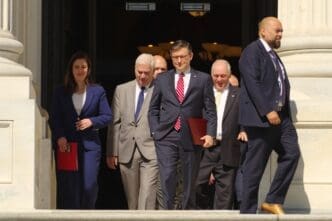President-elect Donald Trump’s national security adviser, Mike Waltz, is currently evaluating various proposals aimed at resolving the ongoing conflict between Russia and Ukraine.
Among the proposals under review is a plan from Gen. Keith Kellogg, recently appointed special envoy for Ukraine and Russia. This strategy suggests implementing a temporary ceasefire while encouraging negotiation between the involved parties. Additionally, it emphasizes the need for European allies and NATO to contribute more substantially to Ukraine’s support. Waltz highlighted the importance of restoring deterrence and peace to avoid further escalation.
Trump, prior to his election win, asserted that the Russia-Ukraine war might not have occurred under his leadership, and has pledged to end the conflict swiftly. In past statements, he suggested Ukraine could have compromised with Moscow to avoid the current situation. However, the prospects for such compromises remain uncertain, given the complex geopolitical dynamics.
The Kellogg plan proposes conditioning U.S. military aid to Ukraine on Kyiv’s participation in peace talks, while delaying Ukraine’s NATO membership aspirations to entice Russia into discussions. Simultaneously, Ric Grenell, Trump’s former ambassador to Germany, advocates for ‘autonomous regions’ within Ukraine, though specifics are sparse. Another floating idea involves Russia retaining current territories in exchange for NATO membership for Ukraine, though this proposal garners little support within Trump’s circle.
President Volodymyr Zelensky of Ukraine remains wary of ceasefires without prior security assurances, recalling that similar attempts in 2014 led to significant territorial losses and escalated conflict. Zelensky’s engagements with Trump suggest a shared desire for a ‘fair resolution,’ though he cautions against hasty settlements which could disadvantage Ukraine.
As Trump prepares to assume office, his team, including Sebastian Gorka, hints at possible hardline measures. Gorka mentioned possibly increasing military aid to Ukraine as leverage against Russia, while also suggesting the potential to withhold aid if Ukraine resists negotiation efforts. This multifaceted approach mirrors the evolving nature of U.S. foreign policy as the Trump administration takes shape. Recent movements by the Biden administration, such as permitting Ukraine to use long-range missiles against Russia, continue to influence the conflict’s dynamics.
As the Trump administration plans for its transition, the strategy for ending the Russia-Ukraine war remains fluid. While various proposals are being considered, the ultimate approach will depend on a multitude of factors, including international engagement and regional developments.
Source: CNN










